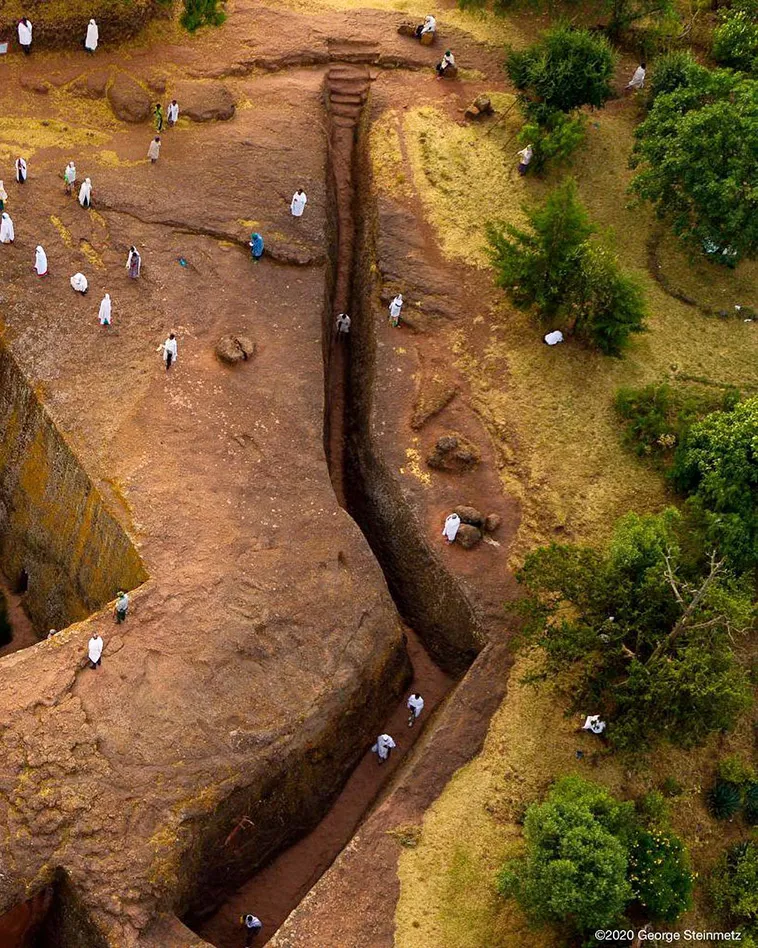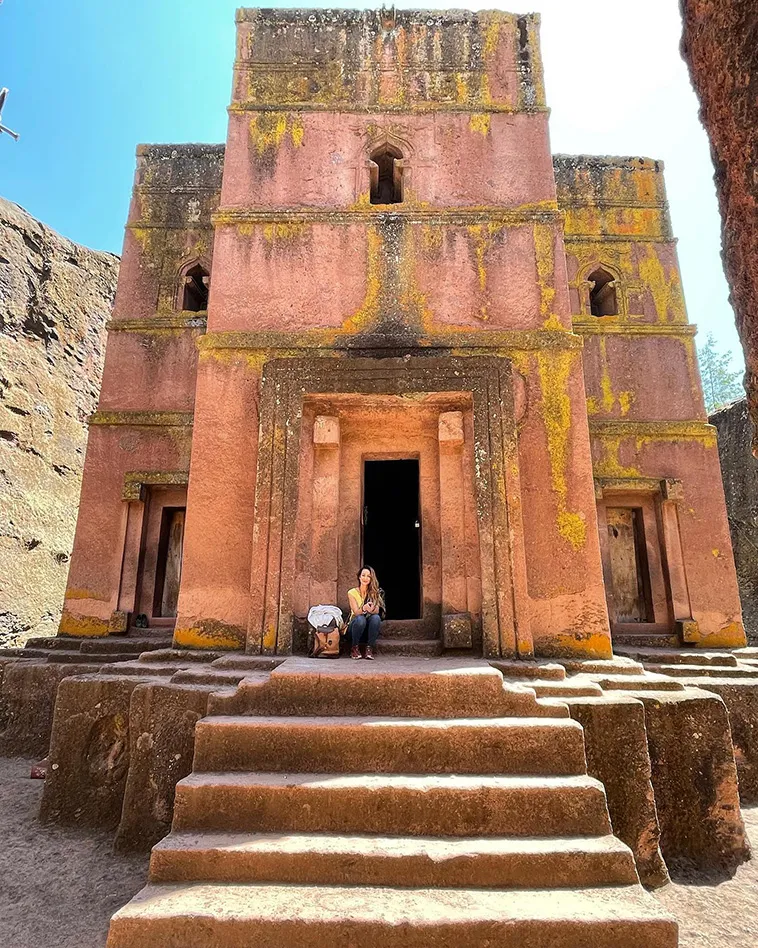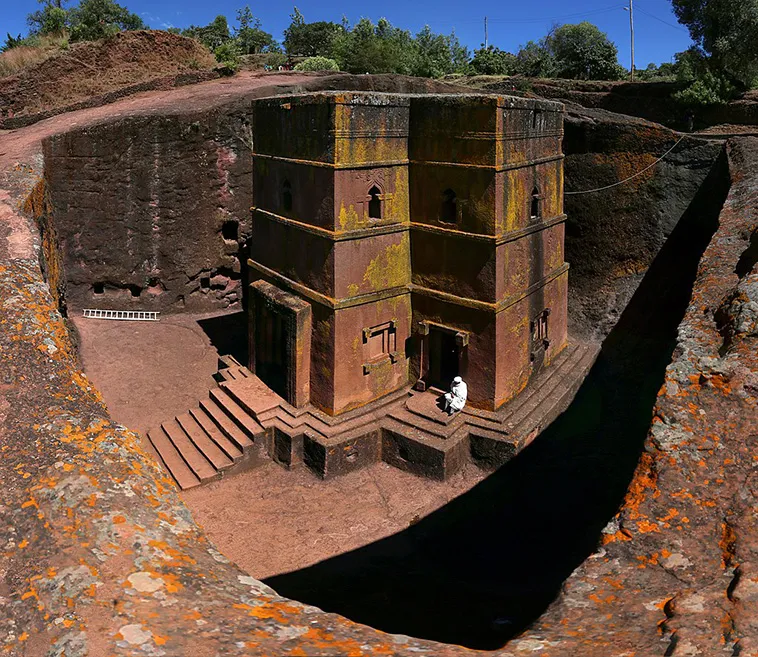
In the heart of Ethiopia is situated one of its holiest towns, known as Lalibela, where a group of eleven monolithic rock-hewn churches stand. They are the biggest monolithic temples in the world, and listed as a UNESCO World Heritage site, yet much mystery still surrounds their construction. The age of these buildings is unknown, but legends mention that they were excavated during the reign of Gebre Mesqel Lalibela , who ruled Ethiopia at the beginning of the 13th century AD.

Legends also claim that the churches were built in 24 years. Even today, accomplishing this work using carbon steel tipped chisels and diamond blades would be remarkable. There are also many other peculiarities about its construction, such as the fact that the massive amount of stone and earth that would have had to be removed from around the churches and from their hollowed out interiors, was nowhere to be found.

Of all the churches of Lalibela, in Ethiopia, the one dedicated to St. George is certainly the most scenic and best preserved and is considered the most beautiful by the many tourists who come here every year to admire it. Representing the apogee of the rock-hewn tradition, it’s the most visually perfect church of all, a 15m-high three-tiered plinth in the shape of a Greek cross – a perfectly proportioned shape that required no internal pillars. Due to its exceptional preservation, it also lacks the obtrusive roofing seen over the other churches.

To reach the base and the entrance of the church it is necessary to go through a narrow trench, about 50 meters long, that ends in a covered passage, that, in turn, leads to a short stairway, that leads to the clearing that surrounds the building.
